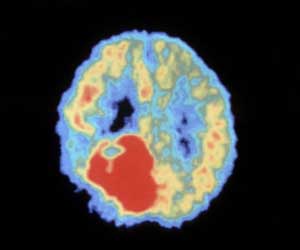A type of stem cell in glioblastoma is present in different states, with different response to drugs and radiation.

‘Cell states in a glioma tumor that were resistant to radiation were also resistant to drugs, and states that were resistant to one drug tended to be resistant to most of the other tested drugs.’





In a new study, published in the journal Cell Reports,
scientists from Uppsala University show that a type of stem cell in the
tumor is present in different states, with different response to drugs
and radiation. The results may open an avenue towards development of new treatment strategies designed to reverse therapy resistant cell states to more sensitive states.
The new results from Uppsala University show that a single tumor contained GICs in different states that are differently resistant to therapy. Cell states that were resistant to radiation were also resistant to drugs, and states that were resistant to one drugs tended to be resistant to most of the other tested drugs.
"Another interesting result was that the GICs did not fall into distinct response groups. Instead the difference in their response can best be described as a continuum of cells with different resistance levels. We also discovered a relationship between the resistance level and molecular characteristics of the tumor that are associated with disease prognosis. A resistant cell state of the GICs was linked to characteristics associated with poor prognosis and a sensitive cell state was linked to characteristics associated with better outcome", says Anna Segerman, who has led the study together with Bengt Westermark, Department of Immunology, Genetics and Pathology.
A new strategy to treat glioblastoma could be to target the intertumor heterogeneity, i.e. the presence in the same tumor of a mix of GICs that have different resistance levels and are linked to different prognoses.
Advertisement
Source-Eurekalert









